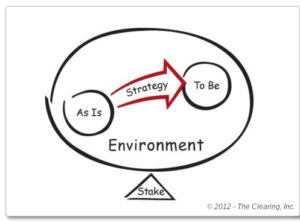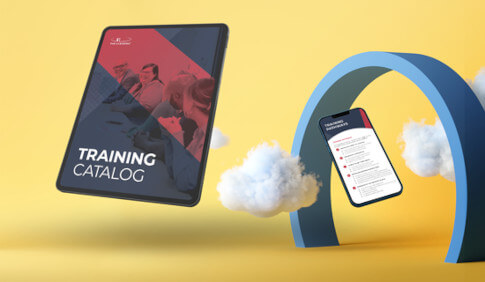Professionalizing an Organization 101
Let’s start with what “professionalizing” an organization doesn’t mean. While it may suggest a negative connotation, “professionalizing an organization” does not imply that an organization is unprofessional. Nor does it apply solely to transforming a small organization into a national or global entity.
When we say professionalizing an organization, we mean developing or evolving its ways of working to meet the needs of the organization at that stage of growth – whether it’s a company, government agency, or simply a division within one of the above. While professionalizing an organization in its second year of business will look a lot different than professionalizing that same entity 50 years down the road, every company going through a “professionalization” has a few items in common.
First, people are at the crux of the process. Second, the end results may be different, but the process undertaken to “professionalize” an organization will have the same qualities and underlying themes regardless of size or age.
Signs an Organization is Ready for “Professionalization”
At The Clearing, we consider both quantitative and qualitative indications when working with clients ready to make a change.
Let’s look at an example from the quantitative side – an organization hiring a lot of new people. Imagine a 40-person real estate firm with plans to double its staff within the next three years.
Rapid expansion implies the organization is taking on new employees who have yet to be versed in company workplace culture; contracting is likely getting more complex; and business agreements are becoming increasingly complicated. The organization may have managers used to controlling a $5 million budget now faced with managing $50 million. These simple quantitative clues signal it may be time to revisit operating procedures and ways of working.
On the qualitative side, our consultants listen for clues from leaders. Here are several anecdotes I hear from leaders at organizations large and small that indicate it may be time to consider a professionalization exercise.
- “I’m too bogged down in operational issues to lead strategically.”
- “My teams are asking me to make all the decisions.”
- “We have great processes, but no one is following them.”
If leaders are deep in the weeds, team members don’t feel empowered to make decisions, and people aren’t following the processes already in place, it’s likely the organization has outgrown its current ways of working.
Whether we arrive at the realization a change is required quantitatively or qualitatively, the risks of failing to act come with both professional and personal costs. Without a focus on strategy, organizational growth may stagnate. When team members don’t feel empowered to make decisions, the risk of losing them to another organization increases. In addition to a loss of institutional knowledge, departures can damage morale, negatively impacting workplace culture. If processes aren’t followed, balls may be dropped and deadlines not met.
The personal impact of each of these is also real. Leaders without enough time may begin to neglect areas critical to personal well-being: health, family, hobbies, etc. Employees who remain after an exodus of talent may find themselves overworked and under-resourced. Combined, these organizational and personal impacts clearly illustrate the importance of proactively evolving ways of working as you grow instead of waiting until after problems begin to appear.
The Clearing’s Approach “Professionalizing” an Organization
As noted above, when approaching this type of work, it is critical to remove the implication that consultants are called in because something has to be fixed. We partner closely with our clients to understand history and context, but serve primarily as an objective set of outsiders observing a group’s operating systems and individual working styles, and when necessary, interrupting the inherent inertia with the principles of Appreciative Inquiry.
This allows us to capitalize on areas of value and what makes an organization unique, while also considering the needs that they have today. It also helps our consultants understand where the organization’s history – which is critical to charting the path forward. To determine the right path, we practice collective sense-making to enable the team and consultants to agree on where we’re starting from.
To that end, we begin by grounding ourselves and our leaders in the CORE Prime. We start by interviewing the leadership team and key managers and individual contributors, in addition to reviewing any documentation that feels relevant. After synthesizing and sharing that feedback, we conduct a visioning session with key stakeholders to imagine a desired future state and simultaneously coach
leaders to lead from their new reality.

The Impact of Professionalizing an Organization
When we professionalize, we prepare the organization to survive and thrive beyond today. Along the way, we may encounter technology, systems, and other resources that are too complex for our current needs and we encourage leaders to think about living into that future rather than waiting for the future and its needs to arrive. The goal of professionalization is to transform an organization
from leader-dependent to strategy-dependent – communicating, aligning, and developing tools, resources, and people to ensure continuity and a bridge to future success.
Top 3 Items to Consider When Thinking About Making Changes in Your Organization
- Prioritize Reflection: The first step is taking time to reflect and identify that a change is necessary. And that starts with getting clear about your role as a leader. As organizations change, so do leadership requirements. Here’s an example: It’s not uncommon for founders of startups to say, “Hey, I really don’t enjoy serving as the CEO and the responsibilities along with the role. Maybe I’m more passionate and can better serve the company as the Chief Technology Officer.” By getting clear on their role, they can see where the change needs to happen. In that case, hiring a CEO who can run the business while they focus on innovation. It’s not always easy, but having the right person at the top is critical.
- Check your Bench: The next step is considering who you have around you. For example, if you need to pull out of the weeds of day-to-day operations, does your leadership team have the skills necessary to step in? If not, consider programs to upskill or redeploy talent to meet their strengths. There is no single cut-and-dry system of how to assemble your organization structure; however, putting your leadership team in the right position will help you successfully drive growth. Then, your leadership team can implement the same personnel process across their teams, ultimately aligning the strategic and operational vision across the organization.
- Socialize your Plan: Effective communication is a critical part of successful organizational change. The right communication strategy can drive employee engagement, head off issues before they become a problem, and keep your organization aligned on your end goal.
If your organization development has hit an inflection point where its current ways of working just aren’t working anymore or
you’re looking to deepen your leadership bench, we would love to chat – reach out whenever you’re ready.






 The Clearing’s Employee Experience
Improvement model, adapted from Itam
& Ghosh, 2020, focuses on three objectives:
The Clearing’s Employee Experience
Improvement model, adapted from Itam
& Ghosh, 2020, focuses on three objectives: 














